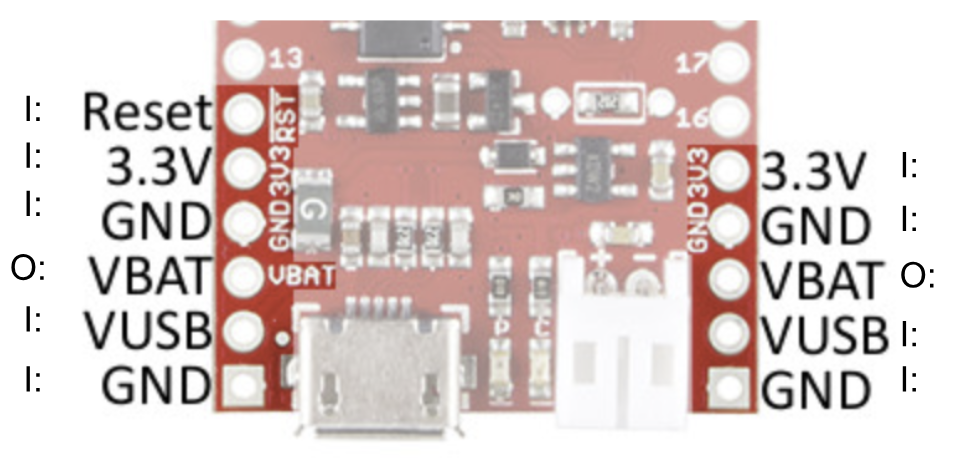Final Documentation
Please Log In for full access to the web site.
Note that this link will take you to an external site (https://shimmer.mit.edu) to authenticate, and then you will be redirected back to this page.
You’ve made a working product and deployed it out into the field. What a great way to wrap up the semester before the summer! However, we need to keep it working throughout the summer and we don’t know your system like you guys do. We also want to be able to transfer learnings to future teams. So let’s spend some time compiling all the information we could possibly need in order to keep your systems up and going. ASK US IF YOU HAVE ANY QUESTIONS ABOUT ANYTHING.
Format
-
Make a Google Drive Folder named: Team [X]- Final Documentation
-
In that folder create:
- A folder named Team [X]- System Design
- A doc named Team [X]- Assembly
- A doc/sheets named Team [X]- COGS
- A folder named Team [X]- Firmware/Software
- A folder named Team [X]- Presentations
System Design
The Team [X]- System Design folder will have at least five documents.
- Team system [X]- System Diagram. This (PDF or Slide) hardware diagram should include:
- Every PCB represented as inputs and outputs with pin-level labelling: we want to see every input and output labeled to the pin/socket on each connector (see image below)
- Each PCB should be labeled with its "common name" (i.e., VEML board) and it's path in your KiCAd repo (e.g.,
team7\VEML_boardv3) - Cabling showing every connection between boards
- Other components: sensors, solar panels, display, battery, etc.

-
Team [X]- Debugging. In this Google Doc, list out all of your debugging mechanisms. This includes listing out status LEDs and what the LEDs mean in terms of each board. Also list out any built-in debugging modes in your system.
-
Team[X]_ID.zip. This zip file contains all your project files (Fusion360, Solidworks, etc.) for your Industrial Design, such that we will be able to open and edit your project ourselves on our computers.
-
Team[X]- Specifications. This Google Doc includes all final specifications, including documentation & data for how you verified that specification.
-
Team[X]- Power budget. This (Google Doc or Sheet) contains your final power budget.
- Note which values are measured vs. estimated/datasheet/etc
- Provide JouleScope screenshots for measurements
PCBs
-
All KiCAD projects should be in your team github repo.
-
Check each board to make sure all component values are accurate on the board and update the boards to reflect any bodges that you might have made in the assembly process.
-
Add notes in each schematic reflecting any details or conditional choices in your design that are important for future users of your board files to know.
-
Add a README text file to each project describing:
- The function of the board
- Inputs and outputs to the board
- Components with special considerations (low ESR caps, etc.)
Assembly
-
In the doc entitled Team [X]- Assembly, provide numbered step-by-step instructions to assemble your system.
-
Include a diagram at the start labeling all the parts in your system so we know what you are referencing when you mention a component in your instructions.
-
Walk us through assembling the entire system. We don’t need Lego-level instructions, but include key pictures and diagrams. Think Sparkfun assembly tutorial as inspiration.
COGS
-
In the doc/sheets entitled Team [X]- COGS, provide a table of some sort that accounts for EVERY single part in your system. An example template is linked here; feel free to use or make your own.
-
Organize the parts by category (Board [X], Board [X], Enclosure, etc.). List all prices in USD. Assume 100-part quantities.
-
Make sure to include the following details, however you choose to format this document:
- Part Number
- Manufacturer
- Link
- Part Count Per System
- Unit Cost
- Extended Cost
- OVERALL BOM
-
Add in fabrication and assembly costs to estimate your COGS.
- Assembly: after you have the assembly process optimized, time yourself performing the assembly, and then use a reasonable labor rate to estimate that cost.
- Enclosure: you can get online quotes from various 3DP vendors. CraftCloud is a decent one.
- OVERALL COGS
Firmware/Software
-
All firmware and software files should be in your team Github repo.
-
Make sure your code is THOROUGHLY commented. We should be able to read your comments and know what your code is doing at a glance.
-
In your Team [X]- Firmware/Software folder, include two documents:
- Team [X]- Firmware. A (PDF or Sheet) of your firmware state/logic diagrams.
- Team [X]- Server Details. A Google Doc including the following information:
- Server base URL
- Path to your application on the server
- Path to your database(s) on the server
- SQLite schemas for each of database table
- What user is running the server
- Credentials for the user running the server
- List of all the endpoints
Presentations
- In the Team [X]- Presentations folder, place your DR1, DR2, final milestone meeting, and final review presentations here.